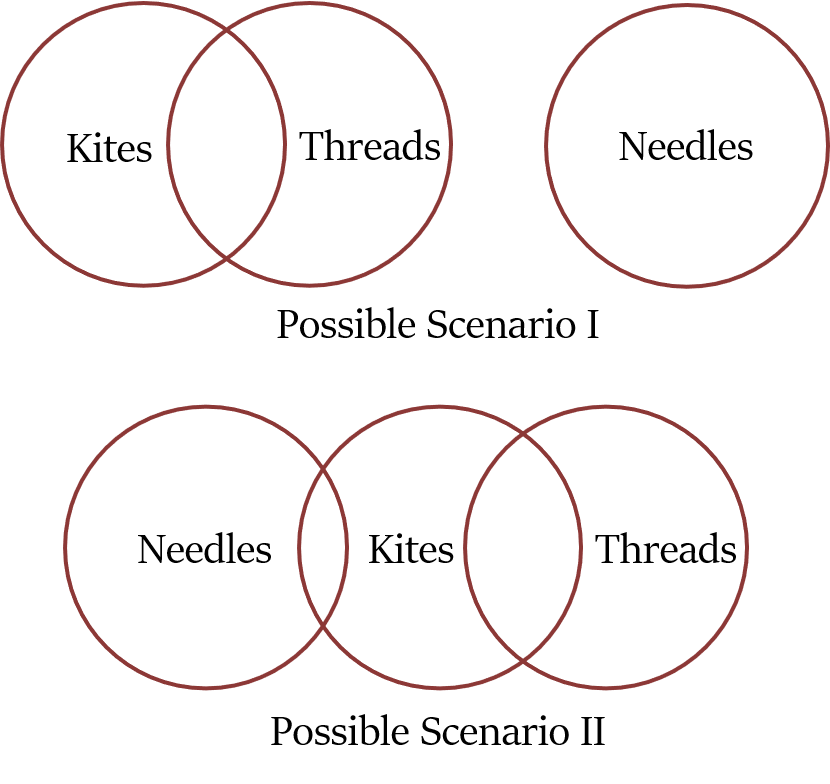Syllogism using Venn Diagrams
Steps
We have already seen how to represent various types of statements as Venn diagrams. In case two or more premises are given, then we need to follow these steps:
- Step 1: Drawing standard representation for each statement separately. (standard representation means a representation which is most common and usually sufficient way to denote the statement)
Step 2: Combining the representations drawn in Step 1 in all possible ways. (we need not draw all possible combinations; a couple of them will be more than sufficient.)
Step 3: Making interpretations from the combined figures obtained in Step 2. Any given conclusion will be true if and only if it is supported by all the combined figures and no combined figure contradicts it.
Step 4: There is one more extra step involved that most students overlook. If both the given conclusions in a question come out to be wrong individually, then do the following too.
That is, check for complementary pair of conclusions.
Complementary pair of conclusions - If one is false other will definitely be true and vice-versa.
E.g. “Some tigers are ladies.” And “No tiger is a lady.”
The first conclusion means that 1 to All tigers are ladies. The second conclusion means that 0 tiger is a lady.
Both conclusions cannot be false at the same time. One of them must be true. Because they cover the whole range of possibilities, i.e. from 0 to All.
And because there is no overlap between them, i.e. there is no common case, both cannot be true at the same time either.
All this will become much more clear after we solve a couple of questions.
Questions
In each of the questions below are given two/three statements followed by two conclusions numbered I and II. You have to take the given statements to be true even if they seem to at variance from commonly known facts. Read all the conclusions and then decide which of the given conclusions logically follows from the given statements disregarding commonly known facts.
Give Answers:
(a) If only Conclusion I follows.
(b) If only Conclusion II follows.
(c) If either Conclusion I or II follows.
(d) If neither Conclusion I nor II follows.
(e) If both Conclusion I and II follow.
Q. Statements:
Some kites are threads.
No thread is needle.
Conclusions:
I: Some kites are needles.
II: No needle is thread.
Explanation:
 (We need not draw all the possible scenarios. Generally, a couple of them are enough to solve the question.)
(We need not draw all the possible scenarios. Generally, a couple of them are enough to solve the question.)Now let us consider the given conclusions.
Conclusion I: Some kites are needles.
It is not necessarily true, as seen in scenario I. So, this conclusion is incorrect.
Conclusion II: No needle is thread.
As it is given that, no thread is needle. So, it is obvious that no needle will be thread either. So, this conclusion is correct.
Answer: (b)